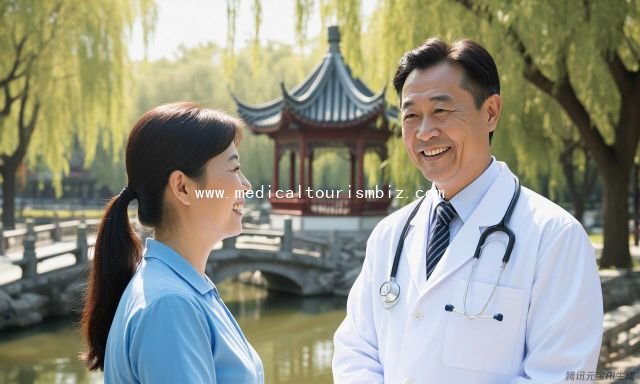The Attractiveness of Chinese Medical Tourism with Chinese Medicine Characteristics

China's medical tourism has a significant global attraction in terms of its “TCM characteristics”, which is not only a medical service, but also a profound cultural experience and a unique health philosophy. Its core attraction is reflected in the following aspects:
1. Deep historical heritage and cultural appeal:
◦ Thousands of years of inheritance: With over 2,000 years of history, TCM is an important part of Chinese civilization. Its unique theoretical foundations (yin and yang, five elements, internal organs and meridians, identification and treatment, etc.) and diagnostic and therapeutic methods have a strong appeal to international tourists looking for an in-depth cultural experience.
◦ The philosophy of “Taoism and Nature”: TCM emphasizes the holistic and health-care concepts of “unity of heaven and man” and “preventing illness before it occurs”, and promotes natural therapies to balance the body and mind. This philosophical system, which is very different from Western medicine, is in line with the modern pursuit of holistic and preventive health care.
◦ Cultural experience: The TCM diagnostic and treatment process itself (looking, hearing, questioning and treating) and the accompanying health and cultural programs such as medicinal diets, Tai Chi, Qigong, and meditation provide visitors with an immersive experience of Chinese culture.
2. Unique treatment concepts and methods:
◦ Holistic concept and personalized treatment: Chinese medicine emphasizes “evidence-based treatment”, focusing on individual differences and the overall state of the body and mind, rather than on a single symptom or organ. This deeply personalized approach is appealing to modern people who are looking for “precision” and “person-centered” services.
Natural therapies and low side effects: Natural therapies such as herbs, acupuncture, tuina, cupping, gua sha, and medicinal baths are mainly used, which have fewer perceived side effects than many Western pharmacological treatments, and are more in line with the needs of some groups of people (e.g., patients with chronic illnesses and those seeking natural therapies).
◦ Cure of future diseases and health management: The concepts of “preventing disease before it occurs” and “preventing disease before it occurs” in Chinese medicine give it an advantage in the fields of chronic disease management, subhealth management, post-surgical rehabilitation, anti-aging, and preventive healthcare, which is an important market segment for medical tourism. 3.
3. Solutions for a wide range of health needs:
◦ Chronic disease management: e.g. neck, shoulder, waist and leg pain, rheumatoid arthritis, chronic gastrointestinal disease, insomnia, fatigue syndrome, etc.
◦ Chronic disease management: e.g. neck, shoulder, back and leg pain, rheumatoid arthritis, chronic gastrointestinal diseases, insomnia, fatigue syndrome, etc.
◦ Rehabilitation and convalescence: post-surgery (especially orthopedic) rehabilitation, post-stroke rehabilitation, chronic pain rehabilitation.
◦ Beauty and anti-aging: Chinese medicine beauty (internal and external), acupuncture beauty (lifting and firming), anti-aging, weight loss and shaping.
◦ Infertility treatment: TCM is unique in regulating the endocrine system and improving the function of the reproductive system.
◦ Mental and emotional regulation: Relieving stress, anxiety, depression, etc. through traditional Chinese medicine, acupuncture, and emotional guidance.
4. Integration with Chinese specialty resources/destinations:
◦ “Taoist medicinal herbs” origin: tourists can visit the production areas of Taoist medicinal herbs, such as Changbai Mountain (ginseng), Yunnan (panax ginseng), Ningxia (wolfberry), Bozhou/Angguo (medicinal herbs market), etc., and learn about the culture of “medicinal food and medicine together”.
◦ Special Chinese medicine hospitals and specialized institutions: Beijing, Shanghai, Guangzhou and other places have strong and famous Chinese medicine hospitals or hospitals combining Chinese and Western medicine. Boao Lecheng International Medical Tourism Advance Zone in Hainan provides high-end, internationalized TCM services.
◦ Recreational and cultural resorts: Hainan (coastal climate recreation), Yunnan (plant kingdom + climate), Guangxi (Bama longevity township), Sichuan Qingcheng Mountain/Emei Mountain (Taoist health culture), etc. Combine the beautiful natural environment, recreational and health care resources with TCM.
◦ Hot springs medicinal baths/mineral springs therapy: Combining hot springs containing special mineral elements for TCM physiotherapy.
5. Relative cost advantages:
◦ Cost-effective and high quality services: Compared to developed countries such as Europe and the United States, as well as certain Asian competitors, Chinese medical treatment and high quality convalescent services in China are generally more cost-effective, especially for the management and rehabilitation of chronic illnesses that require long-term or multiple treatments.
Primary Target Clientele:
- People interested in alternative medicine and holistic health.
- Patients seeking new solutions for chronic diseases, pain management or difficult conditions.
- High-net-worth people and silver-haired people who emphasize on rehabilitation and sub-health care.
- Consumers who seek Chinese medicine for beauty, weight loss and anti-aging effects.
- Travelers who love traditional Chinese culture and seek to combine in-depth cultural experience with health.
- Overseas Chinese expatriates (who identify with TCM).
Conclusion:
The core competitiveness of China's medical tourism lies in its unique and irreplaceable TCM cultural resources and treatment system. Combining deep historical and cultural heritage, holistic and natural health concepts, and personalized diagnostic and treatment services with China's distinctive geographic resources and modern medical infrastructure, it can provide global tourists with a unique value that combines health promotion, disease treatment, cultural experience, and physical and mental relaxation. The key to future development lies in enhancing internationalization and standardization, strengthening credibility, and creating branded products and services with global influence to meet the diversified needs of the growing international health tourism market.
Document dated 2025-07-18 09:39 Modify
- Related Reading
- 1、How Much Does Medical Tourism in China Cost?
- 2、Exploring Medical Tourism in China: A Comprehensive Guide from Advantages to Considerations
- 3、Key Considerations for Medical Tourism in China: Cultural Differences and Healthcare Practices
- 4、China Medical Tourism Entry Procedures: A Comprehensive Guide to Customs, Quarantine, and Airport Pic
- 5、How Does China's Medical Tourism Meet the Diverse Needs of International Patients?
- 6、China Medical Tourism Visa Application Process: Distinguishing Medical Visas from Tourist Visas
- 7、Medical Tourism Costs in China and Hospital Accreditation: Are JCI-Accredited Institutions More Expen
